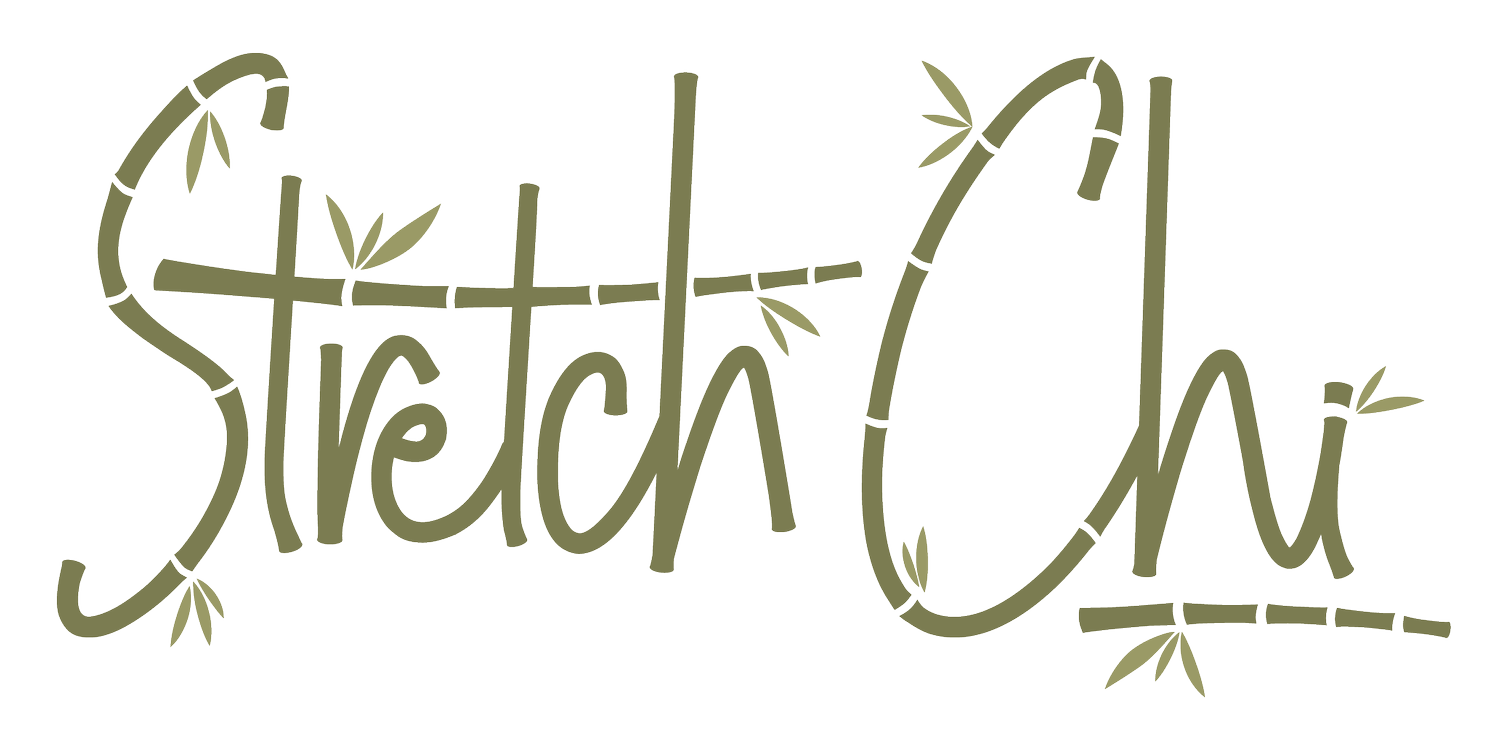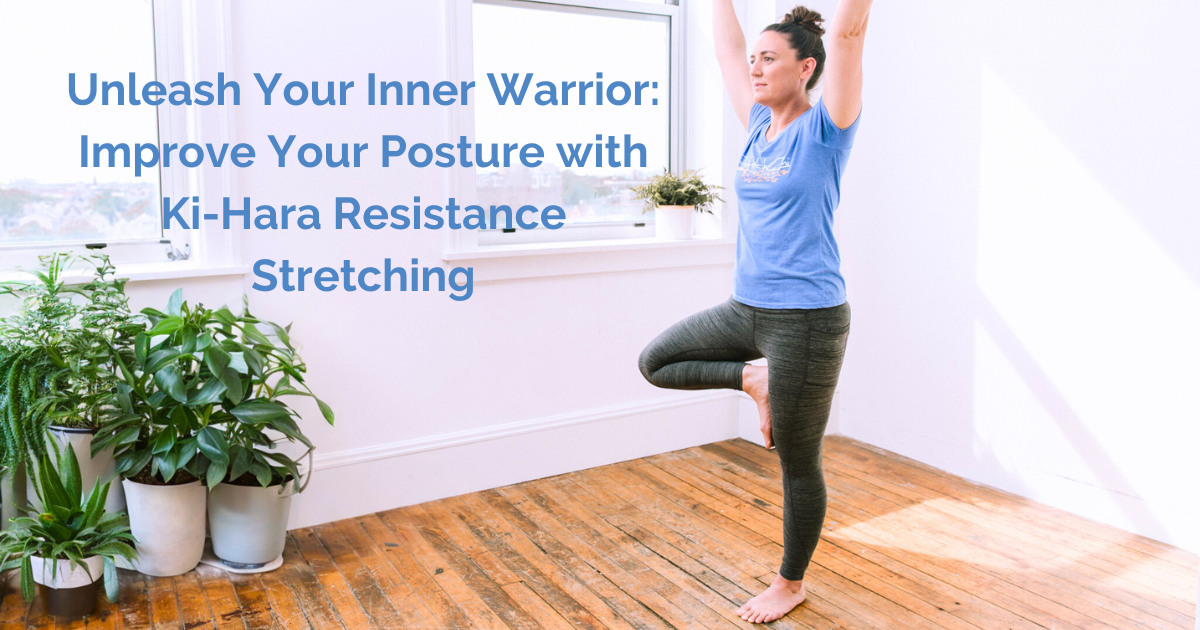Unleash Your Inner Warrior: Improve Your Posture with Ki-Hara Resistance Stretching
Poor posture is a common issue that affects many people today. It is often caused by sitting for extended periods, poor exercise habits, and repetitive motions that lead to muscle imbalances. Poor posture can lead to pain, discomfort, and even injury. Fortunately, Ki-Hara Resistance Stretching can help improve your posture and prevent these issues from occurring.
Poor posture is a common issue that affects many people today. It is often caused by sitting for extended periods, poor exercise habits, and repetitive motions that lead to muscle imbalances. Poor posture can lead to pain, discomfort, and even injury. Fortunately, Ki-Hara Resistance Stretching can help improve your posture and prevent these issues from occurring.
Poor posture can lead to pain, discomfort, and even injury.
Research has shown that Ki-Hara Resistance Stretching can help improve posture by correcting muscle imbalances and increasing muscle flexibility. In one study published in the International Journal of Sports Physical Therapy (1), researchers found that a six-week Ki-Hara Resistance Stretching program improved posture and decreased lower back pain in participants.
Ki-Hara Resistance Stretching works by using eccentric strength training to stretch the muscles. This type of training involves contracting the muscle at its shortest length and then slowly lengthening it while it is overcome by a force. This technique helps to improve the strength and flexibility of the muscle, leading to improved posture over time.
Here are a few examples of Ki-Hara Resistance Stretches that can help improve your posture:
Incorporating Ki-Hara Resistance Stretching into your routine can help improve your posture and prevent pain and injury. Start with these simple stretches and gradually add more as you become more comfortable with the technique.
Real results after just one hour of Ki-Hara Resistance Stretching
Citations:
Jackson, K., & Baker, R. (2019). Ki-Hara Resistance Stretching for Lower Back Pain: A Case Report. International Journal of Sports Physical Therapy, 14(1), 795-800.
5 Essential Tips for Beginners in Ki-Hara Resistance Stretching: Start Your Journey to Improved Flexibility and Strength
Discover the transformative power of Ki-Hara resistance stretching with these five essential tips for beginners. Unlock your body's full potential by embracing a regular routine, connecting with a supportive community, and nurturing your mind-body connection. Begin your journey to improved flexibility, strength, and overall well-being today!
Are you looking to revolutionize your approach to flexibility and strength training? Look no further than Ki-Hara resistance stretching! This cutting-edge technique tackles common challenges and delivers lasting results, fostering holistic well-being for both mind and body. In this must-read blog post, we'll unveil five game-changing tips for beginners to ensure you unlock your full potential with Ki-Hara resistance stretching. Get ready to embark on a transformative journey that will elevate your fitness game like never before!
Tip 1: Establish a Regular Routine
Aim to incorporate Ki-Hara stretching into your routine 2-3 times per week
Consistency is key in achieving long-term results from your resistance stretching routine. Research shows that individuals who establish a specific schedule for their workouts are more likely to stick to their fitness goals and achieve success (1). Aim to incorporate Ki-Hara stretching into your routine 2-3 times per week, setting aside dedicated days and times for your practice. Adhering to this schedule as much as possible will help you develop the habit of stretching regularly, ensuring that you make steady progress toward unlocking your ultimate fitness potential.
Tip 2: Find a Workout Buddy or Community
Workout buddies practicing Ki-Hara resistance stretching together
Finding a workout buddy or joining a community of like-minded individuals can significantly boost your motivation and accountability. Studies indicate that social support plays a crucial role in maintaining long-term exercise adherence (2). Sharing your Ki-Hara journey with others provides a network of support, encouragement, and valuable insights. Additionally, a workout buddy can help you stay on track with your routine, making the experience more enjoyable and contributing to your overall success.
Tip 3: Start Small and Gradually Progress
Starting small and gradually progressing is key to success in Ki-Hara resistance stretching
It's essential to start with simple, beginner-level stretches and gradually progress to more advanced exercises as your flexibility and strength improve. This approach allows you to build a strong foundation, prevent injuries, and ensure that you don't become overwhelmed or discouraged. Research supports the idea of progressive overload, where systematically increasing the intensity or duration of exercise leads to improved fitness outcomes and reduced risk of injury (3). By adopting this strategy in your Ki-Hara resistance stretching routine, you'll set yourself up for success while minimizing potential setbacks.
To help you get started on the right foot, consider enrolling in our Stretch Chi 101 course, a progressive 16-week program designed for beginners. This comprehensive course will guide you through the fundamentals of Ki-Hara resistance stretching and provide a structured plan for gradual progression, ensuring a safe and effective journey to improved flexibility and strength.
Tip 4: Seek Professional Guidance
Seek professional guidance to ensure proper technique and progress in Ki-Hara resistance stretching
Working with a certified Ki-Hara instructor or following reputable online resources can help you learn the proper techniques and avoid common pitfalls. A professional can provide personalized guidance, assess your progress, and offer modifications or adjustments to suit your unique needs and abilities. Research has shown that expert supervision can lead to better exercise adherence, improved performance, and reduced risk of injury (4). By seeking professional guidance in your Ki-Hara resistance stretching journey, you can ensure that you're maximizing the benefits of the practice while minimizing potential setbacks.
Tip 5: Focus on Mind-Body Connection
Mind-body connection is essential in Ki-Hara resistance stretching for deeper understanding and progress
Ki-Hara resistance stretching emphasizes the importance of the mind-body connection. During your practice, focus on your breath, body awareness, and the sensations you experience while stretching. This mindful approach can help you develop a deeper understanding of your body's needs and limitations, allowing you to make more significant progress in your flexibility and strength. Research indicates that incorporating mindfulness into physical activities can enhance the overall experience and potentially lead to improved exercise adherence and reduced stress levels (5). By maintaining a strong mind-body connection during your Ki-Hara resistance stretching practice, you'll not only see greater physical gains but also experience the mental and emotional benefits that come with increased self-awareness.
Embarking on your Ki-Hara resistance stretching journey is an exciting and rewarding experience. By following these five essential tips for beginners, you'll be well on your way to improved flexibility, strength, and overall wellness. Remember to establish a regular routine, find a supportive community, start small and gradually progress, seek professional guidance, and focus on the mind-body connection to maximize the benefits of your practice.
If you're ready to take the first step in your Ki-Hara resistance stretching journey, consider enrolling in our progressive 16-week course, Stretch Chi 101, designed specifically for beginners. This comprehensive course will provide you with expert guidance, a supportive community, and a structured plan to help you achieve your fitness goals. Start your journey today and unlock your body's full potential!
(1) Lally, P., Van Jaarsveld, C. H., Potts, H. W., & Wardle, J. (2010). How are habits formed: Modelling habit formation in the real world. European Journal of Social Psychology, 40(6), 998-1009.
(2) Carron, A. V., Hausenblas, H. A., & Mack, D. (1996). Social influence and exercise involvement. Journal of Sport & Exercise Psychology, 18(1), 1-16.
(3) Kraemer, W. J., & Ratamess, N. A. (2004). Fundamentals of resistance training: progression and exercise prescription. Medicine & Science in Sports & Exercise, 36(4), 674-688.
(4) Ratamess, N. A., Faigenbaum, A. D., Hoffman, J. R., & Kang, J. (2008). Self-selected resistance training intensity in healthy women: the influence of a personal trainer. The Journal of Strength & Conditioning Research, 22(1), 103-111.
(5) Tsafou, K.-E., De Ridder, D. T. D., van Ee, R., & Lacroix, J. P. W. (2016). Mindfulness and satisfaction in physical activity: A cross-sectional study in the Dutch population. Journal of Health Psychology, 21(9), 1817-1827.





